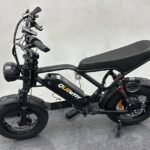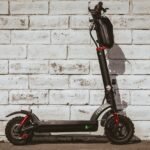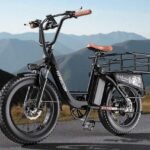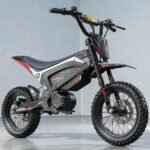![12 Common E-Bike Issues and Simple Fixes You Should Know ([year]) 12 Common E-Bike Issues and Fixes](https://goebikelife.com/wp-content/uploads/2024/06/12-Common-E-Bike-Issues-and-Fixes.jpg)
Electric bikes (e-bikes) have revolutionized personal transportation, making commuting, recreation, and outdoor activities more accessible and enjoyable. With their ability to blend the power of a motor with the freedom of cycling, e-bikes are becoming the go-to choice for many. But just like any piece of technology, e-bikes come with their own set of potential issues that can cause frustration for riders.
So, what are the most common e-bike problems, and how do you fix them?
Whether it’s a charging issue, a motor that stops working, or something else, it’s crucial to understand what could go wrong and how to troubleshoot effectively. Fortunately, many e-bike problems are solvable with a little know-how and a few basic tools. In this article, we’ll cover the 12 most common e-bike issues and provide clear, actionable fixes to get you back on track.
In the rest of this article, we’ll break down each issue, provide step-by-step solutions, and help you understand how to prevent future problems.
1. Battery Not Charging
What’s the Issue?
If you find your e-bike battery won’t charge, it can be a major setback, especially if you’re in the middle of a ride. Battery charging issues are one of the most common problems faced by e-bike owners. It could stem from a number of causes such as a malfunctioning charger, damaged battery terminals, or a faulty battery management system (BMS).
How to Fix It:
- Check the Charger: Sometimes the charger itself may be at fault. Ensure that the charger is connected properly and is not damaged. You can test it with another compatible battery to see if it’s working.
- Inspect the Battery: Over time, e-bike batteries degrade, especially after a few hundred charge cycles. If your battery is old and has lost its ability to hold a charge, it might need replacing.
- Examine the Charging Port: The charging port on your bike and charger may collect dirt and grime. Use a soft cloth or a can of compressed air to clean out any debris. If the charging port is loose, it might need tightening or replacing.
- Check Battery Indicator Lights: Many e-bikes have indicator lights on the battery to show charging status. These can sometimes malfunction, so double-check that the issue isn’t just an inaccurate reading.
Pro Tip: Always store your battery in a cool, dry place to prevent the battery from overheating, which can reduce its life expectancy.
2. Motor Not Working
What’s the Issue?
Your motor is the heart of your e-bike. If it suddenly stops working, it can be frustrating, especially if you’re unsure of the cause. Common reasons include loose wiring, faulty controllers, or problems within the motor itself.
How to Fix It:
- Check the Motor Connection: Inspect the wiring from the motor to the controller to make sure there are no loose or disconnected wires. A simple issue like a loose connector can prevent the motor from functioning.
- Examine the Controller: The controller is the brain of the e-bike, responsible for regulating power between the battery and the motor. If your controller is malfunctioning, you might need to reset it or replace it if necessary.
- Test the Motor: If all the wiring and the controller seem fine, it could be that the motor itself is damaged. Motors can sometimes short-circuit or suffer mechanical failures. In this case, you may need to contact a professional for repairs or motor replacement.
Pro Tip: Regularly maintain your motor by checking for dirt or debris buildup and keeping it properly lubricated to ensure smooth performance.
3. Flat Tires
What’s the Issue?
Flat tires are perhaps the most straightforward issue that e-bike riders face. While this can be caused by a simple puncture, other factors such as improper tire pressure or poor-quality tires can exacerbate the issue.
How to Fix It:
- Check for Punctures: Inspect your tire for sharp objects such as nails, glass, or thorns. You can patch small punctures using a basic bike tire repair kit.
- Replace Worn Tires: If your tire tread is worn down or the sidewalls are damaged, it’s time for a replacement. Keep in mind that low-quality tires are more susceptible to punctures.
- Proper Tire Inflation: Tire pressure plays a significant role in preventing flats. Check the tire pressure regularly, and make sure it’s within the recommended range provided by the manufacturer.
- Use Puncture-Resistant Tires: Consider switching to puncture-resistant tires or adding tire liners to minimize the chances of flats.
Pro Tip: If you’re frequently getting flat tires, try upgrading to thicker tires or using sealant in the inner tube to prevent slow leaks.
4. Brakes Not Responding
What’s the Issue?
If you’re noticing that your brakes aren’t responding properly, it’s a serious safety concern. Common causes include worn brake pads, misaligned rotors, or air in hydraulic brake lines.
How to Fix It:
- Check Brake Pads: Examine your brake pads for wear. Worn-out brake pads will need to be replaced to restore proper stopping power.
- Align the Brake Rotor: If your e-bike uses disc brakes, ensure that the rotor is aligned correctly. Misalignment can cause rubbing or inefficiency. Use a rotor truing tool to correct any bent rotors.
- Bleed the Brakes: Hydraulic brakes can accumulate air in the brake lines, leading to poor performance. You’ll need to bleed the brakes to remove the air and restore braking power.
Pro Tip: Regularly inspect your brakes and give them a quick test before each ride. Performing routine maintenance will ensure that your brakes are always in top shape when you need them most.
5. Display Screen Not Working
What’s the Issue?
The display on your e-bike serves as your control center, showing information such as battery level, speed, and pedal assist settings. If it stops working, you might not know how much power is left or how fast you’re going.
How to Fix It:
- Check the Wiring Connections: Ensure the display wires are securely connected. Loose wires can lead to a malfunctioning screen.
- Inspect the Display for Damage: If the display is cracked or physically damaged, you may need to replace it.
- Reset the System: Sometimes, a simple reset can fix the issue. Turn off the bike, wait for a few seconds, and then power it on again to see if the display works.
Pro Tip: Avoid exposing the display to extreme temperatures or direct sunlight for prolonged periods to prevent damage.
6. Unusual Noises from the Motor
What’s the Issue?
Hearing strange noises, like grinding, whining, or clicking from the motor, often signals mechanical or electrical problems. These noises could be caused by dirt buildup, worn components, or motor malfunctions.
How to Fix It:
- Clean the Motor: Dirt and debris can interfere with the motor’s functioning, so give it a thorough cleaning with a soft cloth and compressed air.
- Check Motor Gears: If the noise sounds like grinding, it may be a sign that the motor gears are worn or damaged. Take the motor apart and inspect the internal components.
- Lubricate the Motor: Lack of lubrication can cause friction within the motor, leading to noise. Apply the recommended lubricant to all moving parts.
Pro Tip: Always follow your manufacturer’s instructions when performing maintenance on your motor to avoid voiding your warranty.
7. E-Bike Losing Power Mid-Ride
What’s the Issue?
There’s nothing more frustrating than your e-bike cutting out in the middle of a ride. This can be caused by an issue with the battery, controller, or even the wiring.
How to Fix It:
- Check Battery Levels: Make sure the battery isn’t drained. If it’s low, charge it up before your next ride.
- Inspect the Wiring: Loose or frayed wires can disrupt the power supply. Check all wiring connections for security and replace any damaged wires.
- Examine the Controller: A malfunctioning controller can cut off power. Reset the controller or replace it if necessary.
Pro Tip: If you’re traveling long distances, make sure your battery is fully charged, and consider bringing a portable charger if you plan on being out for an extended period.
8. Pedal Assist Not Engaging
What’s the Issue?
Pedal assist is one of the key features that makes e-bikes so appealing. When it’s not working, it can significantly reduce the performance of your bike. This could be due to issues with the pedal assist sensor, wiring, or controller settings.
How to Fix It:
- Check the Pedal Assist Sensor: Pedal assist sensors are typically located near the bottom bracket. Ensure they’re properly aligned and free from dirt or debris. If the sensor is damaged or misaligned, it may need replacement.
- Reset the System: Some e-bikes allow you to reset the system. If your pedal assist is malfunctioning, try resetting the system to see if that restores functionality.
- Inspect the Wiring: If you notice that the pedal assist works intermittently, check the wiring for any loose connections or exposed wires that could be causing an intermittent signal.
Pro Tip: Ensure the bike is powered off when adjusting the sensor or the wiring. This helps avoid electrical issues or accidental damage.
9. E-Bike Not Turning On
What’s the Issue?
When your e-bike refuses to turn on, it can feel like the worst-case scenario. This issue can stem from a dead battery, faulty wiring, or even a malfunctioning power button.
How to Fix It:
- Charge the Battery: If the battery is dead, the bike will not power on. Plug the battery in to charge, and give it enough time to recharge fully before turning the bike back on.
- Examine the Power Button: Sometimes, the power button can get stuck or malfunction. If it feels unresponsive or stuck, it may need cleaning or replacing.
- Check the Wiring: Look for any visible damage to the bike’s wiring. Loose connections, especially in the battery or controller wiring, can prevent the bike from turning on.
Pro Tip: Always ensure the bike is powered off before storing it for extended periods, and avoid leaving the bike in extreme temperatures as this can damage the internal electronics.
10. Poor Range
What’s the Issue?
If your e-bike is running out of battery too quickly, this can affect your overall riding experience. Factors like an old battery, improper tire inflation, and riding in high-power mode can all reduce the range of your e-bike.
How to Fix It:
- Check Battery Health: Over time, the battery’s ability to hold a charge diminishes. If your battery is older or frequently being drained to low levels, replacing it will likely restore your bike’s range.
- Ensure Proper Tire Inflation: Low tire pressure increases rolling resistance, making it harder for the motor to propel you forward and draining the battery faster. Check tire pressure regularly.
- Optimize Power Settings: Many e-bikes come with adjustable power settings. If you’re riding in high-power mode, consider switching to a lower setting to save battery.
Pro Tip: If you’re going on longer rides, carry a spare battery if possible, or consider getting a more powerful battery that offers higher capacity and longer range.
11. Loose or Misaligned Chain
What’s the Issue?
A misaligned or loose chain can cause poor performance and may even prevent you from riding your bike altogether. Chain issues are often a result of wear and tear, incorrect maintenance, or poor alignment.
How to Fix It:
- Adjust the Chain Tension: If the chain is loose, you can tighten it using a wrench. Proper tension is key to smooth operation and preventing further issues.
- Align the Chain: If the chain is slipping or skipping, it may be misaligned. You’ll need to adjust the derailleur to realign the chain with the gears.
- Lubricate the Chain: A well-maintained chain runs smoothly and reduces friction. Regularly apply appropriate chain lubricant to ensure longevity and efficient performance.
Pro Tip: Inspect the chain for wear and replace it if necessary. Regularly cleaning and lubricating the chain will help keep it in good condition.
12. Overheating Motor
What’s the Issue?
If your motor is overheating, it can reduce its efficiency and potentially damage the motor in the long run. Overheating is often due to excessive strain, poor ventilation, or riding in high-power modes for too long.
How to Fix It:
- Allow the Motor to Cool Down: If you notice the motor heating up, stop riding and let the motor cool down before continuing.
- Improve Ventilation: Ensure the motor is clear of dirt or debris that could be blocking airflow. Some motors are also equipped with cooling fans, so ensure they’re functioning properly.
- Reduce Load: Avoid putting too much strain on the motor. If you’re riding uphill, switch to a lower power mode or take more breaks to avoid overheating.
Pro Tip: Avoid long, high-power rides on steep inclines without giving the motor time to cool off. Periodically taking breaks will extend the life of the motor and prevent overheating.
Final Thoughts
E-bikes are fantastic machines that make cycling more accessible, fun, and eco-friendly. However, like any technology, they require proper care and occasional maintenance. By understanding common issues like battery problems, motor failures, or brake malfunctions, you’ll be better equipped to troubleshoot your bike and keep it running smoothly.
Whether you’re dealing with a flat tire, a motor that’s not working, or poor range, many of these issues are fixable with the right knowledge. By following the troubleshooting steps outlined in this guide, you can avoid costly repairs and ensure your e-bike remains in top condition for years to come.


![How to Reset Your Electric Bike Battery: A Complete Guide ([year]) How to Reset Electric Bike Battery?](https://goebikelife.com/wp-content/uploads/2025/05/How-to-Reset-Electric-Bike-Battery-768x512.jpg)
![The 10-Step Checklist Before Buying Your First E-Bike: A Beginner’s Guide ([year]) Checklist Before Buying Your First E-Bike](https://goebikelife.com/wp-content/uploads/2025/06/Checklist-Before-Buying-Your-First-E-Bike-768x512.jpg)




